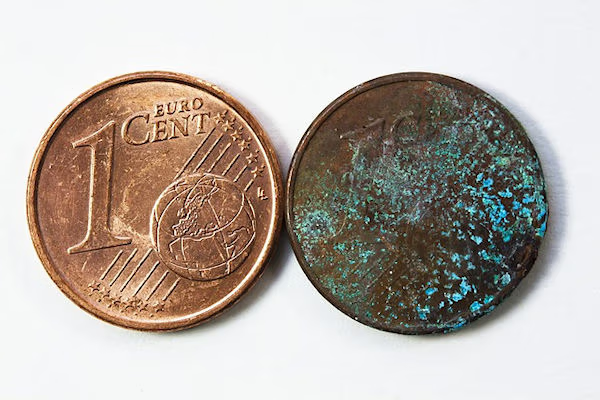Web design service charges and the price of a loaf!
I am trying to decide the best price to charge for web design services, and it occurred to me that I’m a little out of the loop in general. My wife does the shopping while I sit in front of a screen all day, so I don’t really notice these things. Or time, but that’s a different matter.
Anyway, the obvious answer is “the going rate”, which doesn’t actually answer the underlying question.
The last time I drove, it was 50 cents for petrol, then I returned to the UK and it was 50p. I remember saying to my dad at the time, “50p a gallon!? That’s twice what I was paying.” He looked at me sideways and told me to reread the sign. It was 50p a litre! Then he screamed at me because I was driving on the wrong side of the road. Anyway, now it’s something like £1.60 a litre / £6 a gallon.
You used to see it often with software downloads and probably still do. Apple and Adobe were notorious for it. You’d look at the price in America, and it’s 99¢ or $999, and it crosses over to the UK, and they change the currency symbol, shoving the price up!
When I started working, the average salary in the UK was £3,000 a year; that’s about £1.50 an hour, while the minimum wage, via schemes, was only 40p an hour (£16.50 a week!) The average wage now is around £30,000 a year, or £15 an hour.
Did you know they use the price of a loaf of bread to measure inflation in the UK?
I haven’t shopped in a while, but I can remember loaves being 20p recently (so within the past few years), but posh bread, your Hovis and Warburtons, were closer to a quid. The average price of a loaf in the 1970s was around 20p. Earlier this year, it was £1.25 and now it’s closer to £1.60 (cheers, Putin!)
The Office for National Statistics has been tracking the price of a loaf of bread for decades, as part of its efforts to measure inflation. Specifically, it has been tracking the price of a loaf of sliced, white bread weighing 800g.
Liverpool Echo (May 2022): Cheapest loaf of bread… prices checked
ONS: Economy, Inflation and retail price indices – Bread: large wholemeal loaf, sliced, 800g
What am I worth?
You may consider that as a general question.

You look at all the people striking for better pay, whether the nurses in the UK or rail workers in America. Then you look at the likes of Elon Musk, with a worth of $150Bn to $300Bn. Even at the lowest, that is around $500,000 for every person in America, enough to turn everyone in the UK into a multi-millionaire. Or look at the baffling price of art, at footballers’ fees, or Gary Linekar’s taxpayer-funded BBC wages. (Really, who decided that crisp-eating numpty was worth a million quid a year for a few hours of work a week?)

You call out a plumber, and there’s generally no question about the bill; you pay for it. Same with the dentist. I think my dentist charges around £250; an hour. He is good, no question, but you come out after half an hour or so, up a filling, but down £240. It’s like some dark art.
Psychologist Stanley Milgram observed that this is the price we pay for society to work. His analogy was that you had to trust the taxi driver was taking you where you asked, that the barber with the wet razor would give you a close shave and not reenact Sweeney Todd, and that the dentist with the drill knew what he was doing. “Well, I got out of there alive. I’d better pay the man!”
Going back a bit, but when my dentist needed a new computer network, I built it for him. If he wanted a website, he’d probably ask me. We all have our own things, skills and expertise, but the value we put on them seems arbitrary.

Looking at the two coins, if you could only choose one, which would you rather have in your pocket? Which has the most value to you? As legal tender, they are identical, but one’s all shiny, while the other looks like it was pulled out of the gutter. One’s freshly minted, the other is experienced, it could be said. Yet, with antiques, cleaning up the item, even professionally, could destroy its value.
What is the deciding factor? Age, rarity, association, accreditation, or something else? In the case of items with providence, Charlie Chaplin’s cane is worth vastly more than an identical cane made at the same time by the same craftsman. It’s the same two penn’orth, but the world sees them differently.
I suppose it all comes down to the question of how you value your time. And if you understand the value of your time.
Consider gold in an online game like World of Warcraft. If you don’t play the markets, 300,000g might take to 20 hours of farming. Or you can hand over £15 to Blizzard for the gold; after all, it’s only an hour’s pay.
If you actually think about that, though, you are paying to play a game (subs) and then paying NOT to play the game because it’s convenient. This paradox (and laziness) is what makes mobile and MMO games so insanely profitable with microtransactions.
This brings me back to the question of how much I should charge. I don’t see or measure time the way most people do, probably due to dyschronometria, so ‘per hour’ is meaningless to me.
So, a better question is: how much is my time worth to you? How long would it take you to learn web development? An hour? A week? A year?
It’s taken me over 20 years so far, and I’m still learning; most of the things I’ve learnt are obsolete now, but the experience still has value.
Sorting it out on the cheap
For web design and hosting, you can Google and find offers at a pound or so a month. In the UK, Shopify (for eCommerce sites) starts at just £1 a month! After 3 months, though, it’s £29. After that, the sky is the limit, rising to a few thousand per month with Shopify Plus. Your domain name is extra, of course.
Without gimmicks, introductory offers, and all the other snares, so pure at cost, the best I can do is about £26 a year, and most of that is a fixed annual domain fee. That’s without lifting a finger to design.
Now, back dentistry
Mick’s down the pub, moaning about the cost of bread (he has enough money for a few pints, mind), and changes the topic to teeth. He can’t afford to go private, all the NHS dentists are full and not taking anymore, and this one tooth is killing him. What’s the poor guy to do?
Overhearing this conversation, Jimmy leans over and says, “I might be able to help, mate. I’ll do it for the price of a pint!”
“Really?” asks Mick, happily handing over a pint of lager.
Nodding, Jimmy pulls a Dremel drill out of his workbag and says, “Sure. I watched how to do it on YouTube. How hard can it be?”
If you know many tradespeople, they will all have two prices for any job, well, three if you count mates’ rates. The first is how much (per hour) to do the job. The second is how much to do the job after some cowboy has botched it up. And they will all have stories about it.
Web designers are tradespeople, too. The only difference is our main tools are a mouse and keyboard instead of a bag of spanners or what have you.
Well, that and most of our horror stories tend to be the clients, not the job itself. Funniest I read was a website for a geriatric nudist colony – they didn’t tell the designer what their company did. They just invited him around for a tour… ![]() . There are even books about bizarre and unreasonable requests from clients, like this: Clients from hell.
. There are even books about bizarre and unreasonable requests from clients, like this: Clients from hell.
Anyway, I still haven’t answered my initial question, so feel free to give me your own thoughts on this.
~ Ack
Feature image of value, by Nattanan Kanchanaprat, from Pixabay
Two cents, loose change image Stefan Schweihofer, from Pixabay.
Working for the man, by Gerd Altmann, from Pixabay.



